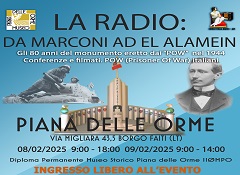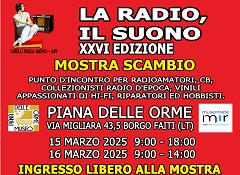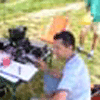4U1UN UN Amateur Radio Club Operation Could Resume Later
4U1UN UN Amateur Radio Club Operation Could Resume Later this Year
08/08/2018
Outside of beacon signals, 4U1UN, the Amateur Radio club station at United Nations Headquarters in New York, has not been heard on the air since 2015, and only then under the commemorative 4U70UN call sign marking the UN’s 70th anniversary that fall, with operation from a ground-level garden area within the UN Headquarters complex. That could change soon. The 4U1UN station, once within the iconic UN building, was dismantled in 2010 and antennas removed in advance of extensive building renovations. But room for 4U1UN — which counts as a separate DXCC entity — was not allocated in the new building layout. UN staffer James Sarte, K2QI, the president of the United Nations Amateur Radio Club (UNARC), said in late July that “red tape” has been a roadblock to getting 4U1UN back on the air.
“It’s taken us years just to get the administration and security to allow us to resume beacon operations,” he told DX-World.net. “Security protocols became much tighter after 9/11. And when renovations [for] the Secretariat were completed, staff were no longer permitted to engage in any activities above the [Secretary-General’s] floor. That said, we’re slowly working to restore operations.”
Negotiations have been continuing off and on for a few years now, but Sarte says that any notion of returning to staffed operations from the station’s former forty-first-floor annex is a thing of the past. “Any such activity from the club will have to be done remotely from a broadcast booth that was loaned to us by the UN’s broadcast services section,” he explained. “The good news, however, is that new equipment was recently donated to the club that would make that a reality. The transceiver, amplifier, and associated network equipment are now in place. We also had a dedicated closed network line installed primarily for that purpose.” Operation would take place from UN Headquarters grounds.
Sarte said the remaining task is to install an antenna and begin testing, which, he estimated, should happen this month, and may already have begun.
“I know many have been waiting for the return of 4U1UN. No one wants to see it back on the air more than I do, but please understand that support for Amateur Radio operations by the [UN] administration has waned over the years. To get where we are today took a lot of cajoling and negotiation.” Most of the burden has fallen on Sarte, who said his workload has increased, plus funds are tight. “But I do promise that 4U1UN will be back on the air soon,” he concluded.
4U1UN is the 34th most-wanted DXCC entity, ahead of such Swain’s Island, Myanmar, and Yemen. Max de Henseler, HB9RS (SK), spearheaded the effort to establish a UN Headquarters Amateur Radio station in 1978. Before that, a UN Amateur Radio station operated as K2UN.
08/08/2018
Outside of beacon signals, 4U1UN, the Amateur Radio club station at United Nations Headquarters in New York, has not been heard on the air since 2015, and only then under the commemorative 4U70UN call sign marking the UN’s 70th anniversary that fall, with operation from a ground-level garden area within the UN Headquarters complex. That could change soon. The 4U1UN station, once within the iconic UN building, was dismantled in 2010 and antennas removed in advance of extensive building renovations. But room for 4U1UN — which counts as a separate DXCC entity — was not allocated in the new building layout. UN staffer James Sarte, K2QI, the president of the United Nations Amateur Radio Club (UNARC), said in late July that “red tape” has been a roadblock to getting 4U1UN back on the air.
“It’s taken us years just to get the administration and security to allow us to resume beacon operations,” he told DX-World.net. “Security protocols became much tighter after 9/11. And when renovations [for] the Secretariat were completed, staff were no longer permitted to engage in any activities above the [Secretary-General’s] floor. That said, we’re slowly working to restore operations.”
Negotiations have been continuing off and on for a few years now, but Sarte says that any notion of returning to staffed operations from the station’s former forty-first-floor annex is a thing of the past. “Any such activity from the club will have to be done remotely from a broadcast booth that was loaned to us by the UN’s broadcast services section,” he explained. “The good news, however, is that new equipment was recently donated to the club that would make that a reality. The transceiver, amplifier, and associated network equipment are now in place. We also had a dedicated closed network line installed primarily for that purpose.” Operation would take place from UN Headquarters grounds.
Sarte said the remaining task is to install an antenna and begin testing, which, he estimated, should happen this month, and may already have begun.
“I know many have been waiting for the return of 4U1UN. No one wants to see it back on the air more than I do, but please understand that support for Amateur Radio operations by the [UN] administration has waned over the years. To get where we are today took a lot of cajoling and negotiation.” Most of the burden has fallen on Sarte, who said his workload has increased, plus funds are tight. “But I do promise that 4U1UN will be back on the air soon,” he concluded.
4U1UN is the 34th most-wanted DXCC entity, ahead of such Swain’s Island, Myanmar, and Yemen. Max de Henseler, HB9RS (SK), spearheaded the effort to establish a UN Headquarters Amateur Radio station in 1978. Before that, a UN Amateur Radio station operated as K2UN.



 . . . . . . . . . . .
. . . . . . . . . . . 







